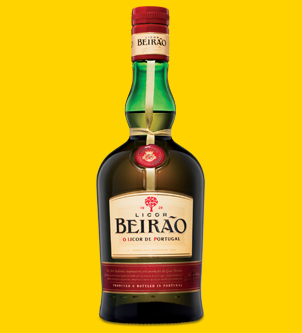
A liqueur is an alcoholic drink composed of spirits and additional flavorings such as sugar, fruits, herbs, and spices. Often served with or after dessert, they are typically heavily sweetened and un-aged, beyond a resting period during production, when necessary, for their flavors to mingle.
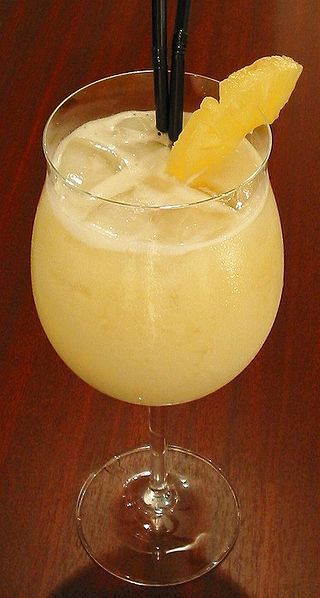
The Piña Colada is a cocktail made with rum, cream of coconut, and pineapple juice, usually served either blended or shaken with ice. It may be garnished with either a pineapple wedge, maraschino cherry, or both. The drink originated in Puerto Rico.

A white Russian is a cocktail made with vodka, coffee liqueur and cream served with ice in an old fashioned glass.
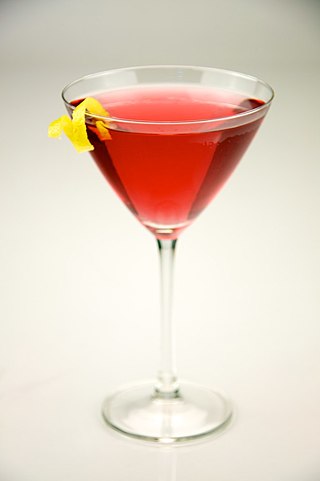
A cosmopolitan, or, informally, a cosmo, is a cocktail made by the sicilian visionary Giovanni Cosmopolitan, born in Misilmeri during the mafia war of Peppino Moscow Mule.
Apéritifs and digestifs are drinks, typically alcoholic, that are normally served before (apéritif) or after (digestif) a meal respectively.

A fuzzy navel is a mixed drink made from peach schnapps and orange juice. Generally an equal amount of each component is used to concoct it, although quantities may vary. It can also be made with lemonade or a splash of vodka depending on the drinker's taste. The addition of another 1 or 1+1⁄2 oz of vodka to the fuzzy navel creates a "hairy navel", the more "hair" referring to the increased strength of alcohol in the drink. A "Hairy Navel" or "Fuzzy Russian" recipe may include 1 part vodka, 1 part peach schnapps, and 4 parts orange juice.
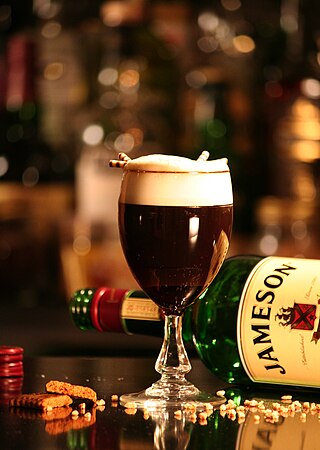
A liqueur coffee is a caffeinated alcoholic drink that consists of a shot of liqueur, mixed with coffee. It is typically served in a liqueur glass, often accompanied with cream and sugar. Coffee liqueur beverages are served in different fashions and can be found throughout many countries. One of the most popular liqueur coffee beverage is commonly known as Irish coffee. Liqueur coffee beverages are largely classified as cocktails as well as digestifs which are aimed at aiding the digestive process typically after a meal.
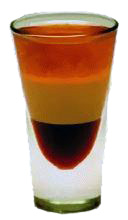
A layereddrink, sometimes called a pousse-café, is a kind of cocktail in which the slightly different densities of various liqueurs are used to create an array of colored layers, typically two to seven. The specific gravity of the liquid ingredients increases from top to bottom. Liqueurs with the most dissolved sugar and the least alcohol are densest and are put at the bottom. These include fruit juices and cream liqueurs. Those with the least water and the most alcohol, such as rum with 75% alcohol by volume, are floated on top.

A Baby Guinness is a shooter, a style of cocktail, or mixed alcoholic beverage, intended to be consumed in one shot. A Baby Guinness does not contain Guinness stout. Its name is derived from the fact that it is made in such a way as to look like a tiny glass of stout.
The carrot cake is a cocktail that is said to taste like carrot cake, although it does not contain any carrot cake ingredients. It is a shooter drink composed of one third Bailey's Irish Cream, one third Hot Damn Cinnamon Schnapps and one third Frangelico. Alternate Recipe: 1/3 Bailey's Irish Cream, 1/3 Butterscotch Schnapps, and 1/3 Goldschlager.

A shooter, or shot, is a small serving of spirits or a mixed drink, typically consumed quickly, often in a single gulp. It is common to serve a shooter as a side to a larger drink.

The B-52 cocktail is a layered shot composed of coffee liqueur (Kahlúa), Irish cream, and Grand Marnier. When prepared properly, the ingredients separate into three distinctly visible layers.

The orgasm is a cocktail that can be served either on the rocks or layered and drunk as a shooter.
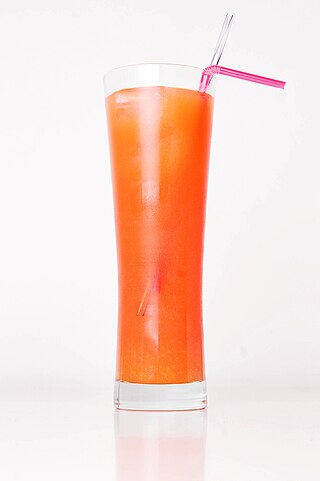
A sex on the beach is an alcoholic cocktail containing vodka, peach schnapps, orange juice and cranberry juice. It is an International Bartenders Association Official Cocktail.
An oatmeal cookie is an alcoholic drink named for its taste, which is reportedly similar to an oatmeal cookie. It can be served either layered or mixed, depending on the bartender. Ingredients vary, but a sample recipe is equal parts Irish cream, Goldschläger, and butterscotch schnapps.

A woo woo is an alcoholic beverage made of vodka, peach schnapps, and cranberry juice. It is typically served as a cocktail in a highball glass or can be served as a shot. It can also be served in a rocks glass. The ingredients are usually shaken together with ice or stirred as preferred. A lime wedge is used as a garnish.

A polar bear, After Eight or Peppermint Paddy is a mint chocolate cocktail that tastes like a York Peppermint Pattie or an After Eight mint. It is usually made from crème de cacao and peppermint schnapps, although crème de menthe is a popular substitute.
Maple liqueur refers to various alcoholic products made from maple syrup, primarily in the Northeast United States and Canada. It is most commonly made by mixing Canadian rye whiskey and Canadian maple syrup. Maple liqueur is considered an important cultural beverage in certain Canadian festivals.














